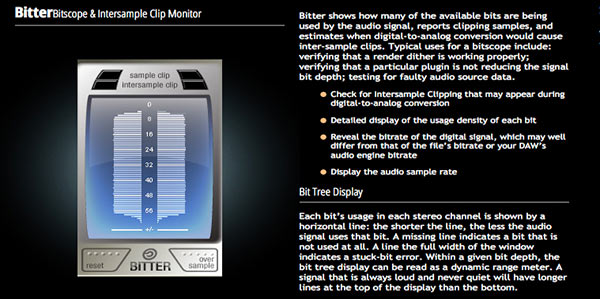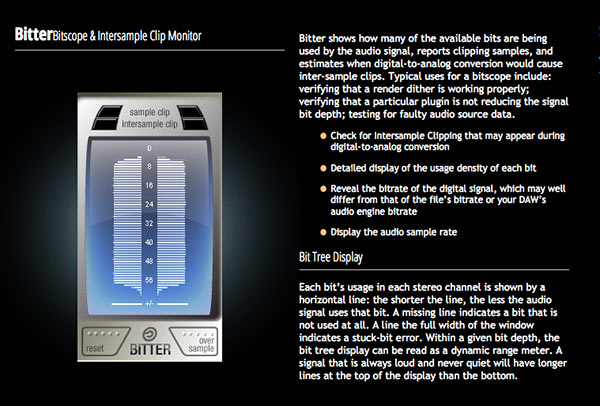The High-Res Mafia: Part II
Is there a conspiracy for or against high-resolution audio and music? There are certainly a large number of interested parties that spew a lot of promotional materials in the fray regarding HRA. Maybe there’s a secret organization that is manipulating all things related to better music fidelity that’s working to advance a false agenda. This assembly of “experts” wants to maximize sales and profits by convincing the audio buying public that any uncompressed music track from any era with high-res specs is worth purchasing again. Come to think of it, I think I was a member of that group…and as of tomorrow, the first day of 2016, they can continue their misguided ways without learning the facts from me. I don’t know whether to be depressed about it or liberated.
But there is a counter argument professed by mastering guru Bob Katz. As I mentioned in a post about his appearance on Home Theater Geeks a few days ago (you can read the piece by clicking here), Bob has a bone to pick with the likes of HDtracks and other “so-called” hi-res music download sites because they have refused to offer a few of his productions as high-res music. He referred to the analytical approach used by the QA engineers at HDtracks as “the HRA Mafia”.
So what is it that HDtracks is doing that rejects some of Bob’s productions from their site? Well, you can go to the HDtracks site and read a page titled, “HDtracks Quality Commitment” and read up on their process of validating source files submitted to them for sale as high-res music.
The opening statement pretty much says it all:
“While other digital music stores may sell millions of tracks, it’s hard to be sure you’re getting the quality you expect. With HDtracks, you can be sure any title you purchase is at the advertised quality. We employ a team consisting of engineers, musicologists & music industry veterans that verify every hi-res title in our store has true 24-bit activity and proper frequency cut-off. HDtracks does not accept lower resolution files simply converted to a higher sample rate, and in these cases the native recording resolutions are requested. In the few exceptional cases where an album was mastered at a higher resolution than the multi-tracking or mixing, HDtracks clearly notes this in detail directly on the album page to the best of our ability to ensure transparency to our customers.”
It’s hard not to notice the not so subtle jab at PonoMusic, which claims to have the “largest high-resolution music catalog” but in reality offers 99.9% standard-resolution ripped CDs. But what about HDtracks? Are their claims to a higher standard valid?
The quality page on their website spells out their process in great detail. The first step is to “verify 24 active bits” using a software tool from Stillwell Audio called Bitter, which is described as a “Bitscope & Intersample Clip Monitor”. It’s available from their site for free (click here to get the tool.)
Figure 1 – The Bitter tool from Stillwell Audio allows you to verify the number of active bits in a digital audio file.
The tool allows you to verify that an audio file is actually using all 24-bits. If a file were originally recorded at 16 bits and then upconverted to 24-bits, the Bitter tool would report that processing. HDtracks’ QA team would fail that particular file as not high-resolution. And I would agree with them…it’s not a high-resolution audio recording.
I’ll continue with the email that Bob sent me regarding his take tomorrow.
For now Happy New Year! And thanks for a very productive year.



Thanks for bring this tool to our attention.
Regarding sources for some truly high resolution recordings, check out Linn Records, Channel Classics, Analekta, and Primephonic (from Pentatone). Many of the newer recordings they make available are 96/24 or higher.
I agree with you that remastering analog or 44/16 recordings at 96/24 or higher does not qualify them as high resolution but I believe that it is often worth doing especially if the remastering is done from original recordings and, perhaps some remixing is done. This can help to eliminate some of the artifacts of the original mastering such as compression, etc.
These labels do make some terrific sounding recording…although I’ve written about the non sense from Primephonic. And I agree that transferring old analog masters to 96/24 is the right thing to do. The digital files, however, are not high-resolution fidelity. They are only as good as the sources.
The Primephonic web site does contain some nonsense, but the Pentatone recordings are real high res multichannel recordings. As a bonus, and part of the nonsense, the 96/24 surround downloads cost less than the DSD downloads. One other interesting feature on the Primephonic site is the published spectograms for recordings.
I like the Pentatone approach. But reading Andreas Koch’s editorial on Primephonic and the bogus spectra that they posted turned me around.
Thank you, Doctor Mark, for the rich vein of your expertise, which i’ve mined throughout 2015. I wish you a happy, fruitful 2016, with many victories. The specious claims and “creative” audio pseudoscience of your polemical opponents give us in the Antipodes a jolly good laugh, for which more thanks!
Happy New Year James and thanks!
Good thing the web offers free dictionary’s. LOL
I’m delighted that you have a powerful ally in HDTracks, which has the largest market share (or at least mind share) for stereo high resolution music.
I’ve always had good experiences with them.
With them upholding the integrity of the term, you can focus your efforts on the added dimension of surround recording, an area where you have
competition other than live concert disks by the major studios, most of which are in 48/16, the standard for video equipment. Blockbuster movies’ Blu-ray disks may be in 48/24, to convey action scenes, but there’s very little other multi channel 96/24 music coming from American studios.
On your own and perhaps in a cross-marketing arrangement with HDTracks, you can really step out on this frontier.
The Chesky brothers are friends and run a great site…however, I disagree with much of their messaging. They are checking files but still stating that 44.1 kHz/24-bit transfers are hi-res music…which is false. Almost all of the content on their site should rightfully be categorized as “high-resolution transfers”. The inclusion of another 8-bits of “activity” in a recording from analog tape is pointless.
Happy New Year, Mark!
I have a question for you. HDTracks.com says that recordings must utilize all 24 bits. I know many of the recordings are sourced from Analog Masters. I understand analog tape is roughly equivalent to less than 16 bits of dynamic range. So, how could these older recordings occupy 24 bits when converted to digital?
Thanks,
Ryan
You’re being optimistic when you say 16-bits for an analog master…it’s closer to 10-12 bits. Which makes your point about verifying 24-bits very important. Those extra bits don’t matter…so why make a big deal out of checking for them?
There’s no conscious on any sides of the HDA issue accept from you and a few others.
I have posted the issue of dynamic range for HDA before but things just keep getting worse.
I already reported HDTracks file of Jeff Lynnes Alone In The Universe has a DR7 average.
But it has recently come to my attention that Jackson Browns – Running On Empty, a 1987 CD release, which had a DR13, is now squashed down to DR7 or so on the HDTracks High Resolution release.
http://www.computeraudiophile.com/f14-music-analysis-objective-and-subjective/jackson-browne-runnin-empty-24-192-hdtracks-26901/#post493176
This is ridiculous! If we can’t have some kind of standard set by the HDA committees at least HDTracks could post the numbers in the About This Album section and let the market decide. But that won’t ever happen, the Chesky’s might lose a sale or two.. That is unless we make enough noise about it like we did when we caught them selling the upsampled files they now rap Pono for doing. LOL
What a complete mess HDA has turned into, and sadly all you (Mark) ever got for trying to help was a kick in the A2S. SAD
The BS will continue…and get only get worse. The only way it may change is if people stop purchasing the so-called HD albums.
Mark, we have been highly critical of HDT since our inception mainly because of their lack of focus on the quality of master and sample rate. However, it is REALLY great to hear that the Chesky brothers are at least trying to be more transparent with customers regarding their high-res catalog.
We do feel very strongly that it is in THEIR BEST INTEREST to report whether or not a master is different than its Redbook counterpart and if that information is not directly available from the label and/or artist, report a DR number (TT Meter seems like the defacto standard at this point). I realize that a DR score is by no means a great way to determine quality, but neither is sample rate.for that matter, and it gives SOME CLUE if the HDT version is a more dynamic, less crushed version. IT ALSO has the by product of pressuring labels/artists who do submit source material to realize that their customers are at least conscious of Loudness War style mastering, i.e. “brick at your own risk.”
I really wish they would do this (btw if not DR score, than RMS/peak numbers and customers in the know can do the rest). It would be a really great win for audiophiles all around. I know they would loose sales initially, but I think the long term benefits outweigh any brief short term loses.
The Chesky brothers are in the business of recording albums in high-resolution for their own label. The HDT site is populated by standard-resolution tracks sold in big bit buckets. They get the content from the major record labels. They report what they can but most of the time the labels don’t supply the provenance information.
I thought the Chesky brothers owned HDT?
Mark, I’m sorry, but there is zero reason why they can’t measure DR (or something similar) and post it in the information tab of every album. If they really value transparency, then that’s what they would do.
If album X is released by label Y on HDT that is known to have a completely crushed master (DR4/5 on the TT) then I want to know before I spend $13 if the high-res version is sourced from an alternative master.
For HRA to be in viable, there needs to be a sense of stewardship over the bits. They’ve sort of started this program and I applaud them for it. But I want FULL DISCLOSURE on every record and if the label won’t provide it then there is NOTHING stopping them from giving the tech specs of a record themsevles (which includes RMS/peak and/or DR number which would tell customers if another master was used for the HRA version).
They do own and operate HDtracks. They could do a lot more but resources are tight and it really is the supplier’s responsibility to provide complete provenance information…and the label’s don’t.
(That was supposed to be “little or no competition” of course.)
There are two complementary arguments for “stage perspective” surround that appeal to two different but overlapping constituencies: (1) greater transparency by allowing the instruments to be reproduced more clearly by different speakers, and (2) greater gut-level involvement from being surrounded by the instruments.